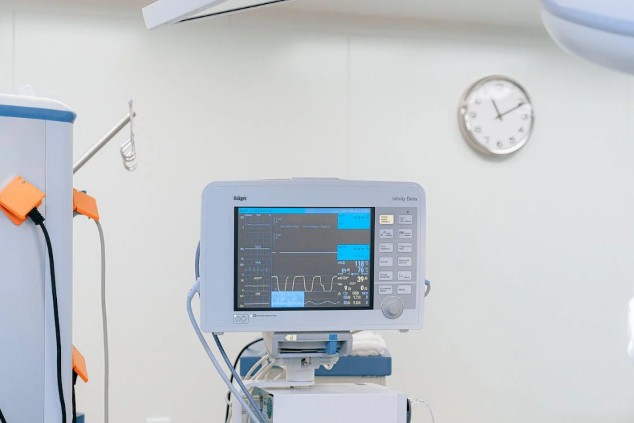
Nonmetallic materials are increasingly used in medical equipment and tools, from diagnostic to surgical instruments.
Nonmetallic materials, such as polymers, ceramics, and composites, offer several advantages over traditional metal-based materials. These nonmetallic materials provide improved biocompatibility, better resistance to corrosion and wear, and greater design flexibility.
Nonmetallic Materials In Diagnostic Equipment
Diagnostic equipment, such as X-ray machines, CT scanners, and MRI machines, rely heavily on nonmetallic materials. The use of nonmetallic materials in these devices helps to reduce weight and increase strength, making them easier to move and transport.
Nonmetallic materials can also be used to improve the image quality of diagnostic equipment. For example, some CT scanners use nonmetallic materials in the X-ray detector, which can help to reduce noise and improve image resolution.
Nonmetallic Materials In Surgical Instruments
Nonmetallic materials are also increasingly being used in surgical instruments. One major advantage of nonmetallic materials is their biocompatibility. Many nonmetallic materials are inert and do not cause an immune response when used in the body. This can help to reduce the risk of infection and improve patient outcomes.

Polymers
Polymers are one of the most commonly used nonmetallic materials in surgical instruments. Polymers, such as polypropylene and polyethylene, are lightweight and strong, making them ideal for use in instruments such as forceps, scissors, and clamps.
Polymers can also be sterilized using various methods, including autoclaving, which makes them ideal for use in surgical settings.
Ceramics
Ceramics are another important nonmetallic material used in surgical instruments. Ceramics, such as zirconia and alumina, are extremely hard and wear-resistant, making them ideal for use in cutting tools, such as scalpel blades.
Ceramics can also be made into complex shapes and sizes, allowing for greater design flexibility.
Nonmetallic Materials In Implantable Devices
Implantable devices, such as pacemakers and artificial joints, rely heavily on nonmetallic materials. Nonmetallic materials can help improve implantable devices’ biocompatibility, reduce wear and corrosion, and provide greater design flexibility.
Polymers, such as artificial heart valves and stents, are commonly used in implantable devices. Polymers can be made into a wide range of shapes and sizes and can be tailored to meet specific mechanical and biological requirements.
Some polymers can also be designed to degrade over time, allowing the body to absorb the implantable device once it is no longer needed.
Ceramics are also increasingly being used in implantable devices. Ceramics, such as alumina and zirconia, are biocompatible, wear-resistant, and can be made into complex shapes and sizes.
Ceramic-based implantable devices, such as hip and knee replacements, are becoming increasingly popular due to their longevity and resistance to wear.

The Challenges of Using Nonmetallic Materials in Medical Equipment
Although nonmetallic materials offer numerous advantages for medical equipment and tools, they also present several challenges. One of the main challenges is the need for biocompatible materials that can withstand the human body’s environment.
Safe for Use in Medical Settings
Nonmetallic materials must be able to resist corrosion, degradation, and wear over time while remaining inert to biological fluids and tissues.
Another challenge is the need to ensure that these materials are safe for use in medical devices and do not cause adverse reactions in patients. Materials used in medical devices must undergo rigorous testing and evaluation to ensure that they meet regulatory requirements and are safe for use in humans.
Precision and Accuracy
Another challenge in using nonmetallic materials is the need for high precision and accuracy in the manufacturing process. Medical equipment and tools require extremely tight tolerances and exact specifications to ensure optimal performance and patient safety.
Nonmetallic materials may require specialized manufacturing techniques to achieve these requirements.
Cost
Cost is also a consideration, as nonmetallic materials may be more expensive than traditional metallic materials. However, the cost of nonmetallic materials is offset by their superior performance and durability, which can result in cost savings over the life of the device.
Environmental Impact
Another challenge is the need to address the environmental impact of nonmetallic materials. Many nonmetallic materials are derived from fossil fuels and may have a high carbon footprint. There is a growing need to find sustainable alternatives that minimize the environmental impact of medical devices and tools.

Future Directions in Using Nonmetallic Materials in Medical Equipment
The future of nonmetallic materials in medical equipment and tools is promising, with ongoing research and development aimed at addressing the challenges outlined above and expanding their potential applications.
Advanced Materials
The development of new and improved nonmetallic materials is ongoing, emphasizing materials that are biocompatible, durable, and cost-effective. Advanced materials such as ceramics, composites, and polymers are being studied for their potential use in various medical devices and tools.
3D Printing
3D printing technology can manufacture highly precise and complex shapes, which is especially valuable in the medical industry. 3D printing of nonmetallic materials is being explored to produce customized medical devices and tools, such as implants and surgical guides.
Smart Materials
Nonmetallic materials with sensing and actuating properties are being developed for use in medical devices and tools. These smart materials can detect changes in the body, such as changes in temperature or pressure, and respond in a controlled manner to provide therapeutic benefits.
Sustainability
There is a growing emphasis on the use of sustainable materials in the medical industry, including nonmetallic materials. Biodegradable and renewable materials are being studied for their potential use in medical devices and tools to reduce the environmental impact of these products.
Integration with Technology
Nonmetallic materials can be integrated with technology to provide advanced capabilities in medical devices and tools. For example, sensors and microelectronics can be embedded in nonmetallic materials to provide real-time monitoring and feedback during medical procedures.
CNPS’s fiberglass solutions are one of the ways nonmetallic materials can be used in the medical field. They are used in casting and splinting materials to provide stability.



